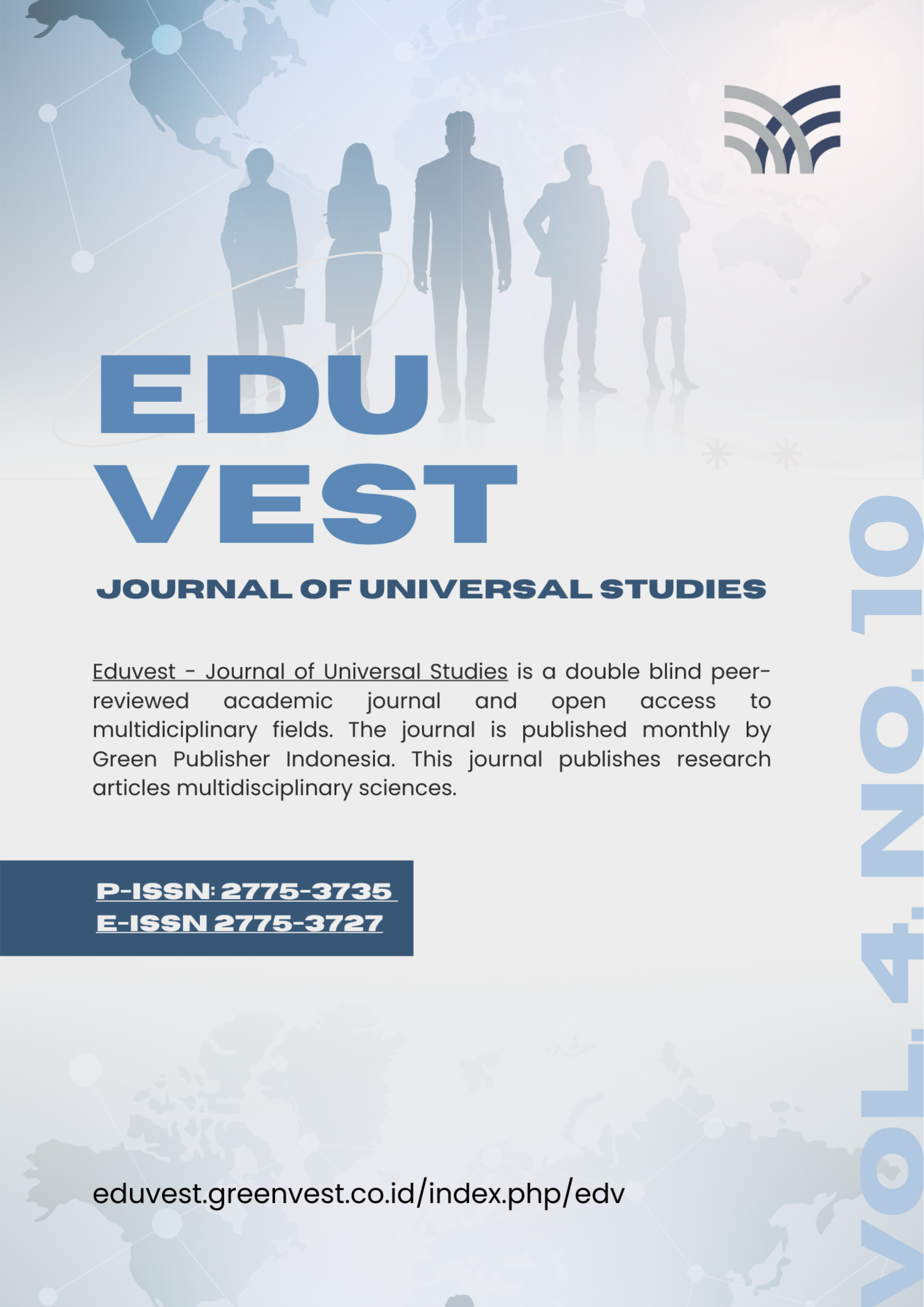The Effect of an Inclusive School Environment on The Learning Achievement of Children With ADHD In Class III of Primary School
DOI:
https://doi.org/10.59188/eduvest.v4i10.1330Keywords:
Child, ADHD, Environment, inclusiveAbstract
The background to this research is that ADHD (Attetention Defic Hyperactifity Disorder) children are very dependent on their environment, because they have difficulty focusing and are hyperactive. This will relate to the social and achievement of ADHD children. The aim of this research is to explain the influence of an inclusive school environment on the learning achievement of ADHD children in third grade of elementary school. The method used in this research is descriptive qualitative, which allows researchers to clearly explain social reality through observations and interviews at the research site. A qualitative approach is useful for explaining the influence of an inclusive school environment on the achievement of ADHD children in third grade of elementary school. Qualitative research is an inquiry strategy that plays a role in searching for meaning, understanding, concepts, characteristics, symptoms, symbols and descriptions of an event; focused and multimethod, natural and holistic; prioritizes quality, uses several methods, and is presented narratively. An inclusive school environment has an important role in forming social relationships between students who have obstacles and those who do not have obstacles, so that educational goals can be realized optimally. All school members must be able to carry out their respective obligations, as well as students who have obstacles.
References
Felt, B. T., Biermann, B., Christner, J. G., Kochhar, P., & Van Harrison, R. (2014). Diagnosis and management of ADHD in children. American Family Physician, 90(7), 456–464.
Firdaus, F. (2020). Pictures and learning motivation towards the eighth grade students’ writing achievement on descriptive paragraph. Channing: Journal of English Language Education and Literature, 5(1), 26–35.
Handayani, I. N. (2019). Pendidikan Inklusif untuk Anak ADHD (Attetention Defic Hyperactifity Disorder). Annual Conference on Islamic Early Childhood Education (ACIECE), 4, 291–302.
Hasbullah, M. (2012). A comparative analysis of Islamic and postmodernist critiques of science.
Huberman, M., & Miles, M. B. (2002). The qualitative researcher’s companion. sage.
Indriyani, A., Saefulloh, M., & Riono, S. B. (2020). Pengaruh diklat kependidikan dan kesejahteraan guru terhadap kualitas guru di sekolah dasar negeri di kecamatan Jamblang Kabupaten Cirebon. Syntax Idea, 2(7).
Muhibbin, M. A., & Wulandari, P. Y. (2024). The Role of Teacher Interaction and Self-Directed Learning on High School Students’ Online Learning Satisfaction. Procedia of Social Sciences and Humanities, 6, 128–141.
Nurfirdaus, Y., & Bassey, P. E. M. (2021). Sociodemographic Factor Relationship with Infant Survival in Indonesia. Journal of Biometrics and Pop-Ulation, 10(1), 11–17.
Sanagi, T. (2016a). Attitudes to normalisation and inclusive education. Journal of Research in Special Educational Needs, 16, 229–235.
Sanagi, T. (2016b). Teachers’ Misunderstanding: The Concept of Inclusive Education. Contemporary Issues in Education Research, 9(3), 103–114.
Sayal, K., Prasad, V., Daley, D., Ford, T., & Coghill, D. (2018). ADHD in children and young people: prevalence, care pathways, and service provision. The Lancet Psychiatry, 5(2), 175–186.
Tussyadiah, I. P., & Zach, F. (2017). Identifying salient attributes of peer-to-peer accommodation experience. Journal of Travel & Tourism Marketing, 34(5), 636–652.
Widodo, A., Rahmatih, A. N., Novitasari, S., & Nursaptini, N. (2020). Analisis Gaya Belajar Siswa ADHD (Attention Deficit Hyperactivity Disorder) di Madrasah Inklusi Lombok Barat. Jurnal Bidang Pendidikan Dasar, 4(2), 145–154.
Yusuf, F. A. (2022). An investigation on the learning barriers of boarding school students In terms of different dimensions of the curriculum implementation.
Published
How to Cite
Issue
Section
License
Copyright (c) 2024 Siti Annnoora Niroha Pulungan, Sunardi Sunardi , Budi Susetyo

This work is licensed under a Creative Commons Attribution-ShareAlike 4.0 International License.











